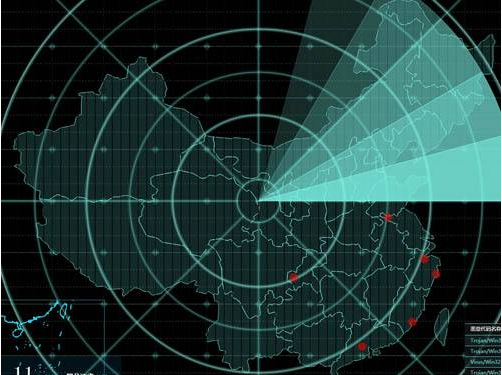
With the rapid development of the Internet, network applications are becoming more and more extensive, and the network function requirements for various industrial control devices are getting higher and higher. The current requirement is that industrial control devices can support TCP/IP and other Internet protocols, so that they can view device status, set device parameters, or transfer data collected by the device to Windows or Unix/Linux through a familiar browser. In the database on the server.
This requires the industrial control system to have two functions:
The first is to complete complex measurement and control tasks on site, because usually some tasks have certain real-time requirements;
The second is to require the measurement and control system to be connected to a certain type of control network to achieve remote monitoring. In most of the current measurement and control systems, the hardware of the embedded system uses 8/16-bit microcontrollers; the software is mostly programmed in assembly language, because these programs only contain some simple loop processing control processes.
Therefore, the communication between the MCU and the MCU or the host computer is usually networked through RS232 and RS485. These networks have problems such as slow communication speed, poor networking capabilities, and difficulty in development. Industrial Ethernet has been gradually improved and is gaining more and more applications in the field of industrial control. Industrial Ethernet uses the TCP/IP protocol, which facilitates networking and has the advantage of high-speed control of the network.
Embedded Linux technologyEmbedded Linux is a small operating system designed according to the requirements of the embedded operating system. It consists of a Kernel (core) and some system modules customized according to needs. Kernel is generally only a few hundred kB or so, even with other necessary modules and applications, the required storage space is small. It has multi-tasking, multi-process system features, and some are also real-time. A small embedded Linux system requires only three basic elements: bootloader, Linux microkernel, and initialization process. The CPU running embedded Linux can be X86, Alpha, Sparc, MIPS, PPC, and so on. The motherboards that match these chips are very small, usually only one PCI card size, and some even smaller. The memory required for embedded Linux is not the well-known conventional memory such as floppy disk, hard disk, Zip disk, CD-ROM, and DVD. It mainly uses Rom, CompactFlash, M-Systems Disk On Chip, Sony Memory STIck, IBM MicroDrive, etc. The body is actively small (similar to the size of the BIOS on the motherboard), and the storage capacity is not too large. Its memory can use normal memory or use dedicated RAM.
Compared to other embedded operating systems, Linux source code is open and there is no black box technology. As a tailorable software platform system, Linux is likely to become an excellent resource for future embedded device products. Linux's innate network pedigree further paves the way for a broad and flat road. Therefore, while maintaining the advantages of the Linux kernel system being smaller, more stable, and more competitive in price, the system kernel is optimized in real time, so that it can adapt to the high real-time requirements of the industrial control field. This is also the development of the embedded Linux operating system in the embedded industrial control system. At the same time, it also makes Linux a newcomer in the embedded operating system.

The standard Linux kernel usually resides in memory, and each application is shipped from disk to memory. When the program ends, the memory it occupies is released and the program is downloaded. In an embedded system, there may be no disk. There are two ways to eliminate disk dependencies. One is in a simple system where the kernel and all applications are in memory when the system boots. This is the working mode of most traditional embedded systems, the same as Linux. The second is Linux-specific features, because Linux has the ability to "load" and "unload" programs, so an embedded system can use it to save memory. A typical system has about 8MB to 16MB of flash and 8MB of RAM, and flash can be used as a file system. Using a flash driver as an interface from flash to file system is an option. Of course, you can also use a flash disk. Use flash memory to get rid of the system's demand for a disk (dependency) with Disk On Chip technology and CompactFlash card.
Programs used to connect Flash Memory and file systems are stored as files in Flash files and can be loaded into memory when needed. This dynamic, load-on-demand capability is an important feature that supports a range of other features. It enables the initialization code to be released after the system boots. In fact, Linux also has a lot of utilities running outside the kernel. These programs usually run once during initialization and will not run anymore. Moreover, these utilities can be run sequentially one after another in a manner that they share with each other. In this way, the same memory space can be used repeatedly to "call" each program, just like a system boot. This saves memory, especially for network stacks that are not changed after one configuration. Drivers and applications can be loaded if the functionality of the Linux loadable module is included in the kernel. Because it can check the hardware environment and install the corresponding software for the hardware, it eliminates the complexity of using a program to occupy a lot of Flash Memory to handle multiple hardware. In addition, the software upgrade is more modular, you can upgrade the application and load the driver on Flashh while the system is running. Its configuration information and runtime parameters can be stored as data files in Flash.
Front Screen Glass Lens For Iphone
Glass Cover For Iphone,Front Screen Outer Glass Lens,Glass Cover With Oca,Glass Cover For Touch Screen
Shenzhen Xiangying touch photoelectric co., ltd. , https://www.starstp.com
